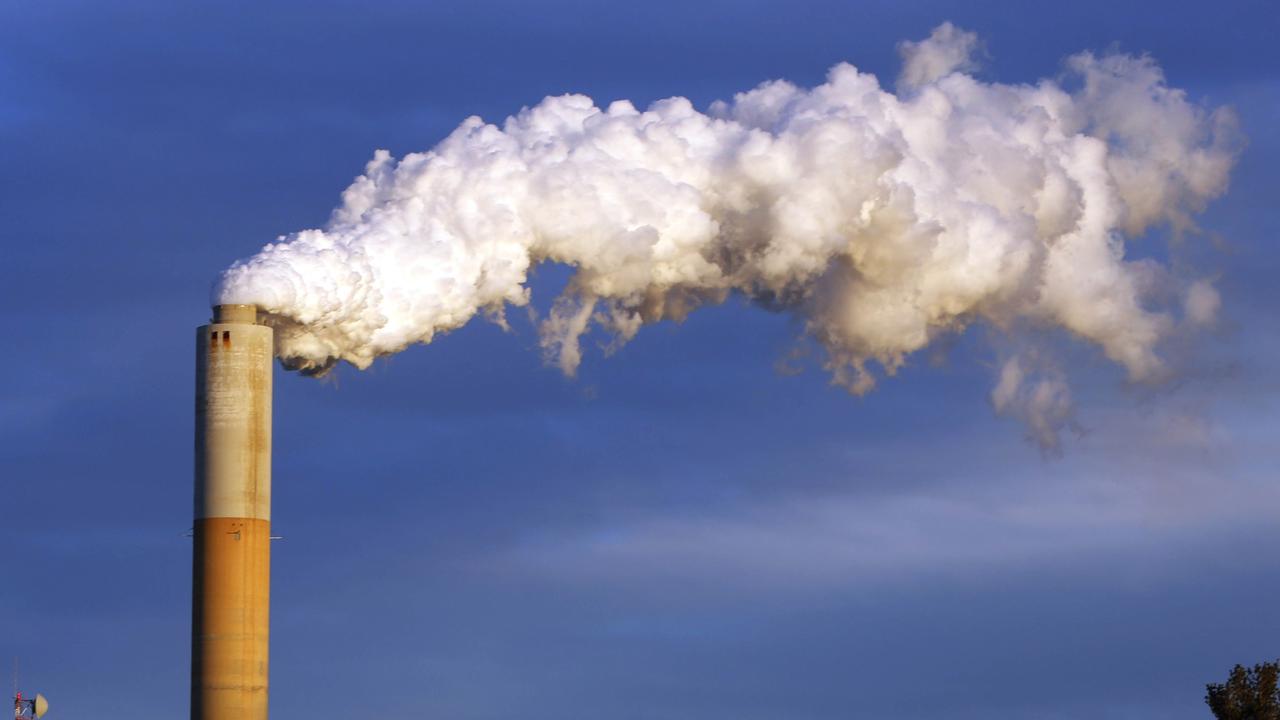AAP FactCheck Investigation: Have New Zealand's greenhouse emissions increased while Australia's have decreased?
The Statement
"Between 2005 and 2018, Australia reduced its emissions by 13 per cent. Across the ditch, New Zealand's emissions went up by four per cent, and this was achieved using some fancy accounting sidesteps involving forestry."
Professor Judith Sloan, economist, December 15, 2020.
The Analysis
As the Australian government faces international pressure to set stricter greenhouse gas emissions targets, it has been suggested the country is doing better than its neighbour, New Zealand.
Australia was controversially not given a speaking spot at a recent UN climate change summit, while the government was criticised for not committing to a net-zero emissions target.
Writing in The Australian newspaper on December 15, contributing economics editor Judith Sloan said New Zealand and Canada had also not been given speaking slots at the summit and suggested Australia was, in reality, doing better than its Commonwealth cousins, despite their governments declaring climate change emergencies.
"So let's take a look at the facts," Prof Sloan wrote. "Between 2005 and 2018, Australia reduced its emissions by 13 per cent. Across the ditch, New Zealand's emissions went up by four per cent, and this was achieved using some fancy accounting sidesteps involving forestry."
AAP FactCheck examined the claim Australia's emissions have reduced while New Zealand's have increased during this period.
Prof Sloan is an honorary professorial fellow at the Melbourne Institute of Applied Economic and Social Research at the University of Melbourne, a commentator and a regular columnist for The Australian newspaper.
At the time of publication, AAP FactCheck's attempts to contact Prof Sloan for details about the sources of her information were unsuccessful.
However, both New Zealand and Australia report regularly on their greenhouse emissions as part of international climate change agreements.
The years 2005 and 2018, cited by Prof Sloan, are significant for both countries. The Kyoto Protocol came into force in 2005 and that is also the base year for New Zealand and Australia's commitments under the Paris Agreement, while 2018 is the most recent reporting period under the deal.
Emissions can be reported as both gross emissions, which show the total greenhouse emissions from a country, and net emissions, which account for changes in land use and forestry.
For example, if forest areas are cleared, this adds to net emissions, while the addition of forest cuts net emissions. In reports, this is accounted for as land use, land-use change and forestry emissions (LULUCF).
Both New Zealand and Australia account for changes in LULUCF emissions when calculating their net emissions.
A comparison of both countries' net emissions for the 14 years from 2005 to 2018 (inclusive) shows that both New Zealand and Australia's emissions decreased during this period, although Australia's emissions decreased at a higher rate.
The Interactive Emissions Tracker from New Zealand's Greenhouse Gas Inventory report, released in April, show that between 2005 and 2018, NZ's net emissions decreased by 0.86 per cent from 55.945 million tonnes of carbon dioxide equivalent (Mt CO₂-e) in 2005 to 55.468 Mt CO₂-e in 2018.
A summary of the inventory report said net emissions were influenced by the planting and harvest cycle of forestry, and historical planting rates and harvesting cycles have a large impact on net emissions in any given year (page 3).
Australia published its National Greenhouse Gas Inventory report in May, which showed net emissions declined by 12.92 per cent, from 617.2 Mt CO₂-e in 2005 to 537.4 Mt CO₂-e in 2018 (Table ES.01, page xiv).
The biggest contributor to Australia's reduction was from changes in forest cover, which went from being a net contributor to emissions to being a significant carbon sink during this period (Table 2.1 page 35).
Prof Sloan suggests net emissions figures may be misleading as New Zealand uses "fancy accounting sidesteps", so AAP FactCheck also analysed gross emissions over this period.
Australia's gross emissions increased over this period, whereas New Zealand's gross emissions decreased at a greater rate than its net emissions.
According to the NZ Ministry for the Environment's Interactive Emissions Tracker, between 2005 and 2018 NZ's gross emissions declined by three per cent from 81.274 Mt CO₂-e to 78.862 Mt CO₂-e.
AAP FactCheck was unable to find figures for gross emissions in Australia's Greenhouse Gas Inventory report. However, it did include a breakdown of emissions by sector and AAP FactCheck calculated the gross emissions by removing LULUCF changes from the net figures (Table 2.1, page 35).
LULUCF changes added 91 Mt CO₂-e to the country's net emissions in 2005, and reduced its emissions by 20.6 Mt CO₂-e in 2018. When the LULUCF changes were deducted from the net emissions it showed Australia's gross emissions increased by 5.8 per cent over this period, from 526.2Mt CO₂-e to 556.8Mt CO₂-e.
AAP FactCheck also compared emissions per capita during this period based on official population figures for New Zealand and Australia (2005 here and 2018 here).
Emissions in both countries decreased on a per capita basis; Australia had a greater decrease in net emissions per person, while New Zealand had a greater decrease in gross emissions.
Between 2005 and 2018, Australia's net emissions per capita decreased by 29.2 per cent to 0.0000213 Mt CO₂-e, while gross emissions decreased by 14 per cent to 0.0000221 Mt CO₂-e. NZ's net emissions per capita decreased by 16.4 per cent to 0.0000112 Mt CO₂-e, while gross emissions decreased 18.5 per cent to 0.0000159 Mt CO₂-e.
It should be noted that on a per capita basis Australia's emissions were much higher than New Zealand's.
Australia's net emissions were 90 per cent higher than NZ's in 2018, and gross emissions were 38 per cent higher. Based on OECD figures, NZ had the fifth highest gross emissions per capita in the OECD in 2018, while Australia had the highest emissions per capita.
Australian National University honorary associate professor Hugh Saddler is an expert in greenhouse gas emissions accounting. Dr Saddler said gross emissions were a better way to compare the true emissions of each country and removing the LULUCF emissions from Australia's net emissions provided a comparable figure for NZ's gross figures.
"The gross emissions provide an apples with apples comparison," he said. "It gives a much better representation of the progress each country is making in moving towards a net-zero economy."
Dr Saddler said comparing gross emissions on a per capita basis would also be fairer.
He said the methods used to estimate LULUCF emissions by both countries were robust and subject to a rigorous review process undertaken by experts from other countries.
"I know about this process, because I was for some years one of these experts and took part in reviews of a number of other countries," he said. "I would therefore be astonished if New Zealand was able to undertake 'fancy accounting sidesteps'."
Dr Saddler said because Australia's per capita emissions were much higher than New Zealand's, the larger country would need to reduce its emissions at a much greater rate in order to reach parity.
Australia's emissions profile also made it easier to reduce its emissions, he said. For example only 21 per cent of Australia's electricity came from renewable sources in 2019, whereas New Zealand's electricity was 82 per cent renewable (page 2).

The Verdict
AAP FactCheck found it mosty false to claim Australia's emissions reduced between 2005 and 2018 while NZ's emissions increased.
While Prof Sloan correctly cited Australia's net emissions reduction, New Zealand's emissions also decreased during this period - albeit at a lower rate than for Australia.
New Zealand's net emissions were not misleadingly low due to "fancy accounting sidesteps", as Prof Sloan suggested. Gross figures - which do not account for land use and forestry changes - show New Zealand's emissions reduced three per cent, while Australia's gross total increased by 5.8 per cent over the same period.
Mostly False – The claim is mostly false with one minor element of truth.
* Editor's note: AAP FactCheck has expanded its ability to fact-check environmental issues with the support of the Australian Conservation Foundation. AAP FactCheck retains full editorial independence in this project and continues to apply the rigorous standards required for accredited members of the International Fact-Checking Network.












